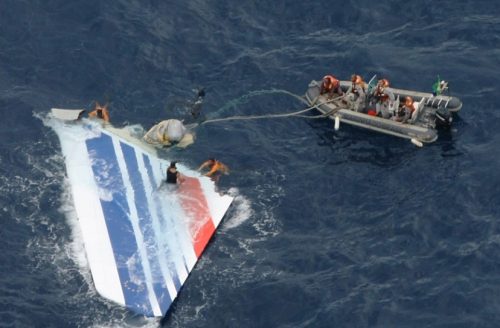
French judges have dropped charges against Air France and Airbus over a mid-Atlantic plane crash in 2009 that killed all 228 people on board, blaming the pilots for losing control of the plane.
In their conclusions, the judges said the pilots of the Airbus A330 had failed to process all the warnings and instrument readings provided by the aircraft.
The plane plunged into the ocean en route from Rio de Janeiro to Paris after entering an aerodynamic stall and falling from an altitude of 38,000 feet during a storm, its engines running but its wings losing lift.
“The direct cause of the accident is the crew’s loss of control of the aircraft’s trajectory,” the judges determined.
Other crews, faced with similar situations, had successfully maintained control of their aircraft, their ruling said.
The judges overruled the prosecutors investigating the case, who had recommended that Air France stand trial over the crash in July.
In their 2012 report, French civil accident investigators found the startled crew of AF447 mishandled the loss of airspeed readings from pitot sensors blocked with ice and pushed the jet into a stall by holding the nose too high. The report also cited poor training and the lack of a clear cockpit display for speed problems.
The three-year civil investigation was not designed to cast blame, which was the purpose of the separate judicial probe culminating in the decision on Thursday.
A lawyer representing the families of victims said an appeal against the judges’ decision would be lodged immediately.
“The judges have just written in black and white that the icing of the pitot sensors had nothing to do with the accident. It’s nonsense,” Sebastien Busy told Reuters. “If the pitot sensors hadn’t iced up, there wouldn’t have been an accident.”
The accident was the deadliest in the history of Air France and in the history of the A330.
A decade later, the aviation industry is still implementing lessons learned from the crash. Changes have focused on training, cockpit procedures and the tracking of aircraft in remote zones.
It took salvage teams nearly two years to locate the A330’s flight recorders on the ocean floor.